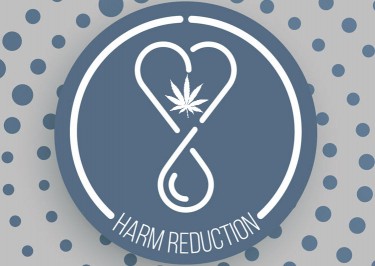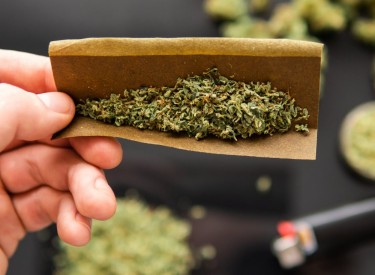Cannabis News
Navigating Life as a CannaParent
Published
1 year agoon
By
admin
The Taboos that still exist in society
You feel it coming on, the wave of anxiety building inside you until it becomes an uncontrollable fit. Your body tenses up, your senses heighten, and your thoughts become jumbled and chaotic. You’re having a meltdown, and you can’t stop it. As you lose control, your parent is there to comfort you, holding you tight and reassuring you that everything will be okay.
For parents of children with autism, Asperger’s, and other neurological conditions, this scenario is all too familiar. They must navigate the challenges of helping their child manage their symptoms and find effective treatments. And for many, medical cannabis has become a lifeline.
One such parent is Amie Carter, whose son Jayden has a severe form of epilepsy that traditional medications failed to treat. After exhausting all other options, Amie turned to medical cannabis, and the results were remarkable. Jayden’s seizures decreased dramatically, and his quality of life improved significantly.
But navigating the world of medical cannabis can be overwhelming for parents and patients alike.
The lack of regulation and education means that many people are left to figure it out on their own, without proper guidance or support. And while some states have implemented programs to help patients access medical cannabis, there is still much work to be done to ensure that everyone who could benefit from it has access to safe, effective treatment.
Despite the challenges, parents like Amie are fighting for their children’s right to access medical cannabis. They have created networks and communities to share information and resources, and they are advocating for better regulation and education. Their stories show that, with the right support and information, medical cannabis can be a powerful tool for improving the lives of people with neurological conditions.
In today’s article we’re going to explore the complex world of medical marijuana from the perspective of an undersaged patient that faces battles of stigmitization due to the ignorance of society and their engrained concept of cannabis.
A Day in the Life of Jayden…
A day in the life of Jayden Carter, a medical marijuana patient, can be stressful and unpredictable.
He wakes up with the hope that today will be a good day, but there are no guarantees. As he gets ready for school, he prepares his cannabis oil capsules and takes them with breakfast, hoping they will provide him with some relief from his chronic pain and anxiety. But as he arrives at school, he is met with police officers who have been called by a concerned parent (or teacher) who noticed that he has a medical cannabis license.
Despite being legal, he still has to face the scrutiny and potential stigma associated with his medication. This encounter leaves him feeling anxious and stressed, exacerbating his condition even further.
Throughout the day, he faces a constant battle to manage his symptoms and avoid unwanted attention. Despite being legal, the societal stigma surrounding medical marijuana use can make it difficult for him to navigate everyday life.
It’s a constant reminder that he is different and that his medication is not fully accepted by society. The stress of this can be overwhelming and make it harder for him to manage his symptoms.
Jayden’s experience is not unique. Medical marijuana patients across the country face similar challenges, from stigma to legal repercussions. But despite the obstacles, they continue to rely on this medication because it’s often the only thing that provides them with relief.
It’s important for policymakers and society as a whole to recognize the value of medical marijuana and to work towards creating a more supportive environment for patients like Jayden. The medical benefits of cannabis are clear, and it’s time for our laws and cultural attitudes to catch up with the science. No one should have to suffer needlessly because of stigma or outdated laws.
The Expenses as a Cannabis Parent
Medical cannabis has proven to be an effective treatment for various medical conditions. However, for parents who are caring for a child with a serious illness, it can be a double-edged sword. While cannabis offers hope and relief, it also comes with a hefty price tag. The high cost of cannabis is a significant financial burden for many parents who are already struggling to make ends meet.
In addition to the direct cost of cannabis, there are also hidden costs associated with its use. Many parents who are using cannabis to treat their child’s medical condition face stigma and discrimination from their communities. They may be visited by Child Protective Services (CPS) or face legal repercussions for breaking the law. The stress of these situations can be overwhelming for parents who are already dealing with the challenges of caring for a sick child.
Furthermore, the high cost of cannabis is directly tied to prohibition. In states where cannabis is legal, prices have dropped significantly due to increased competition and supply. However, in states where it is still illegal, the cost remains artificially inflated. This means that parents in these states have to pay a premium for a product that is readily available in other parts of the country.
The financial burden of cannabis can limit opportunities for families. Many parents have had to quit their jobs or take on additional debt to cover the cost of their child’s treatment. This can have a ripple effect on their family’s financial stability, impacting their ability to pay for other necessary expenses such as rent, utilities, and food.
It is important to note that many parents are willing to go to great lengths to provide their child with the best care possible, even if that means breaking the law. They are faced with an impossible choice – comply with the law and risk their child’s health, or break the law and face legal consequences. This is a difficult reality for many parents who are just trying to do what is best for their child.
The high cost of cannabis and the stigma associated with its use create significant challenges for parents who are caring for a sick child. The financial burden can limit opportunities, increase stress, and impact overall family stability. It is crucial for policymakers to address these issues and make medical cannabis more accessible and affordable for those who need it most.
Urgency to Legalize
The urgency to legalize cannabis and remove it from the Controlled Substance Act cannot be overstated. The fact that it is even on the list is a clear indication of the misguided and outdated approach to drug policy in the United States. Cannabis has been used for centuries for medicinal and recreational purposes and has never been shown to be as harmful as many other substances that are legal, such as alcohol and tobacco.
The Controlled Substance Act was passed in 1970 and created a framework for drug classification, distribution, and enforcement. It classified drugs into five schedules based on their potential for abuse, medical usefulness, and safety. Cannabis was classified as a Schedule I drug, which is the most restrictive category reserved for substances with no accepted medical use and a high potential for abuse. This classification has had far-reaching consequences for cannabis research, distribution, and use.
Cannabis prohibition has monopolized drug distribution and production, leading to the rise of big pharmaceutical companies like Pfizer. These companies have taken over the world, using their immense wealth and influence to shape drug policy in their favor. This has resulted in limited access to alternative treatments and medicines, with cannabis being one of the most effective and accessible options for patients suffering from a wide range of conditions.
Legalizing cannabis would not only remove the stigma associated with its use but would also open up new opportunities for research and development. It would create a legal framework for cultivation, distribution, and sale, allowing for quality control and safety regulations to be implemented. It would also provide tax revenue for local and state governments, which could be used to fund education, healthcare, and other social programs.
The high cost of cannabis is directly tied to prohibition. Because it is still illegal at the federal level, there are significant risks involved in cultivation, distribution, and sale. This creates a black market where prices are inflated and quality control is non-existent. Legalizing cannabis would bring down the cost and make it more accessible to patients who need it.
Parents who use cannabis to treat their children face even greater challenges. They must navigate a legal system that criminalizes their actions and exposes them to potential prosecution, stigmatization, and even the loss of their children through visits from Child Protective Services. The financial burden of obtaining medical cannabis can be significant, as insurance providers often do not cover the cost of treatment.
The urgency to legalize cannabis is especially crucial for parents who use it to treat their children. The current legal framework not only criminalizes their actions but also limits access to a potentially life-saving medicine. It is time for policymakers to recognize the benefits of cannabis and remove it from the Controlled Substance Act. The whole CSA should be abolished, and drug policy should be reformed to reflect a more modern and evidence-based approach to drug use and addiction. It is time to prioritize public health and safety over outdated and ineffective policies that have only served to perpetuate a broken system.
What can YOU do about it?
If you are passionate about cannabis legalization and want to make a difference, there are several practical steps you can take to advance the cause. First and foremost, it’s important to stay informed and educate others about the benefits of cannabis legalization. Talk to your friends and family, share articles and research, and help dispel any myths or misinformation surrounding cannabis use.
Another critical step is to hold your politicians accountable. Contact your elected officials and let them know that you support cannabis legalization and want them to take action. Attend town halls and other community events where you can engage with your representatives directly and ask them tough questions about their stance on cannabis. If your representatives are not representing you on this issue, consider supporting candidates who share your views and vote them into office.
You can also get involved with advocacy groups that are working towards cannabis legalization. These groups organize events and campaigns to raise awareness and pressure lawmakers to act. Some of the biggest and most influential advocacy groups include NORML, the Marijuana Policy Project, and the Drug Policy Alliance.
Finally, you can support the cannabis industry itself by buying legal products and supporting local dispensaries and growers. This not only helps the industry grow and thrive, but it also demonstrates to lawmakers and the public that legal cannabis is a legitimate and valuable industry that can bring in tax revenue and create jobs.
Overall, there is much that individuals can do to advance cannabis legalization. By staying informed, holding politicians accountable, getting involved with advocacy groups, and supporting the industry, we can help bring about meaningful change and make cannabis legalization a reality for all.
PARENTS GIVING KIDS CANNABIS, READ ON..
You may like
Cannabis News
A Deep Dive into the Benefits of Medical Marijuana for Mental Health
Published
16 hours agoon
May 6, 2024By
admin

New Study Dives Deep Into The Benefits Of Medical Marijuana For Patients’ Mental Health
Cannabis Is A Healing Tool In More Ways Than One
As of today, 38 states plus the District of Columbia and three territories have legalized marijuana for medical purposes.
There’s a reason why the movement to legalize weed for therapeutic use only continues to grow: that’s because it simply works. Depending on the state, the most common conditions that cannabis has accepted medical uses for includes seizures, nausea, chronic pain, glaucoma, cancer, multiple sclerosis, muscle spasms, and others to name a few. But even without a medical marijuana card, thousands of people are already enjoying the powerful therapeutic properties that cannabis has for a number of ailments.
That said, using cannabis for a physical ailment also has other positive effects – particularly on patients’ mental health.
There is a strong link, after all, between chronic illnesses and poor mental health. The diagnosis of a physical disease will directly impact and challenge your emotions or state of mind, which is why it’s so common to suffer from severe depression, anxiety, and bouts of anger or sadness. It’s only natural: it seems like you’re going into a downward spiral of emotions, having to figure out treatment, prognosis, and how to live the rest of your life.
But medicating with cannabis may not only help your physical ailment; it can greatly help you regain sanity, too.
According to a recent study out of Cambridge in the United Kingdom conducted by researchers from Switzerland’s University of Basel, patients with chronic health problems most especially chronic pain experience significant improvements in their mental health after medical marijuana has been legalized. The researchers assessed feedback from 7.9 million participants of an online survey conducted from 1993 through 2018.
The participants were grouped into various categories based on their cannabis consumption, including individuals who were “highly likely to abstain from using marijuana, to use marijuana as a recreational drug, or to use it for medical reasons” to identify the impact of medical marijuana legalization on mental health. The investigators also considered the use of marijuana for chronic pain. They measured the participants’ mental health by polling participants to grade their state based on the number of days they experienced mental health issues.
The findings, which were published in Health Economics, Policy, and Law, revealed: “Eased access to marijuana through medical marijuana laws reduce the reported number of days with poor mental health for individuals who consume marijuana for medical purposes and for those individuals who likely suffer from frequent pain.”
They also found that medical marijuana legalization didn’t impact the youth and recreational consumers. “Overall, our results show that medical cannabis legalization in the USA benefits the people it is intended for without harming other groups,” according to Professor Alois Stutzer. He also summarized that there a clear association between mental wellness and liberalization.
The findings of a similar study was released in 2023; it was conducted by researchers at the University of Sydney. They polled over 2,300 patients who were prescribed cannabis in the form of CBD and THC in a carrier oil from November 2020 through December 2021. The participants’ ages ranged from 18 to 97, and almost 2/3 of them were female.
The participants were asked to measure their quality of life relating to their overall health, pain, sleep, depression and anxiety before they began therapy with marijuana. They were polled again after 2 weeks of therapy, a routine that continued monthly for 3 months.
“Within the first three months of medicinal cannabis therapy, participants reported improvements in their health-related quality of life, fatigue, and health conditions associated with anxiety, depression, and pain,” explained Margaret-Ann Tait, a senior research officer to SWNS.
Additionally, the researchers reported that the patients experienced significant benefits when it came to their fatigue, pain, and quality of life.
The struggles with mental health are even more intense for cancer patients. However, medical marijuana use has been shown to help reduce depression, anxiety, and fatigue in patients diagnosed with cancer. A single-center, case-matched study conducted on 74 patients who were recently diagnosed with head and neck cancers found that cannabis users, compared to non users, reported less pain, better well-being, less fatigue, depression, and anxiety.
Head and neck cancers, in particular, can significantly impact one’s mental health given that it affects one’s swallowing mechanisms, facial structures, and speech. “These very much impact people’s social interactions and sense of self-worth,” said Dr. Zhang.
Conclusion
Medical marijuana has numerous therapeutic applications for patients suffering from a wide array of disease. Its anti-inflammatory, anti-emetic, anxiolytic, and anti-epileptic effects have been studied, and found to be extremely beneficial for those who are healing from disease. Cannabis makes life more bearable while helping to treat pain at its source, which is a major help for patients who simply want to make it, day by day.
At this day and age, we unfortunately still don’t have the standardized formulations of THC or CBD to help with conditions. However, doctors who are knowledgeable with medical marijuana can help. If you or a loved one are struggling with chronic disease and want to explore using marijuana as adjunct treatment, reach out to a medical professional who can help. There is hope on the other end of the line when cannabis is involved!
CANNABIS MENTAL HEALTH TIPS, READ ON…
Cannabis News
Did the Death of the Lazy Stoner Stereotype Push Cannabis Rescheduling Forward?
Published
2 days agoon
May 5, 2024By
admin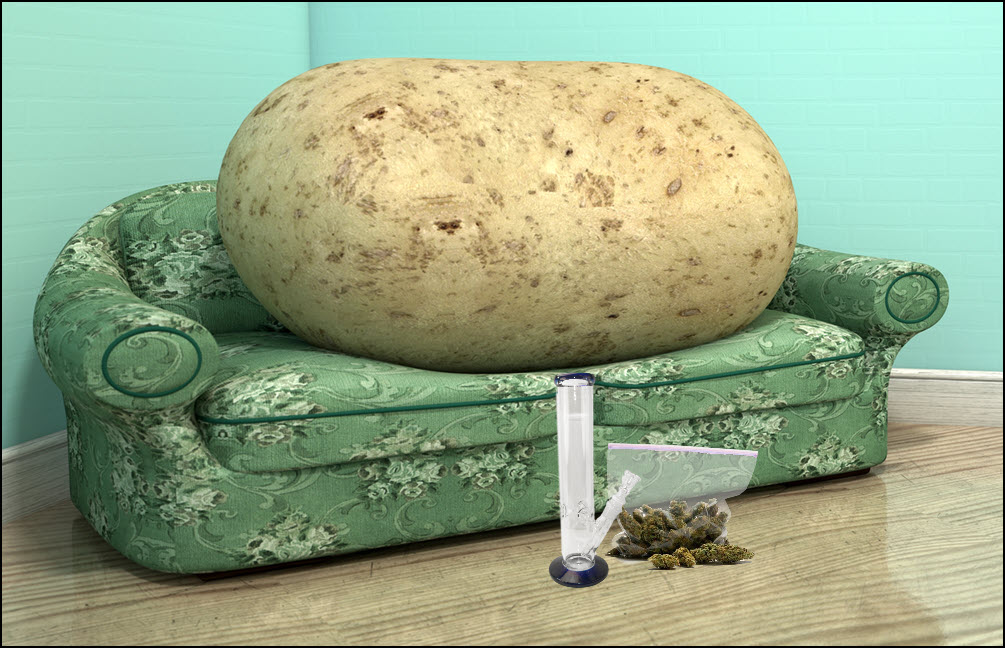

The Death of the Lazy Stoner Stereotype
https://neurosciencenews.com/attention-cannabis-psychology-25994/
https://www.reddit.com/r/psychology/comments/1cdsuhj/cannabis_users_stay_motivated_lazy_stoner_myth/
For decades, the stereotype of the “lazy stoner” has been deeply ingrained in our collective unconscious, thanks to years of prohibitionist programming. This image of the unmotivated, unproductive cannabis user has become a pervasive cultural trope, perpetuated by media portrayals and anti-drug campaigns.
However, this bias not only unfairly discriminates against the countless hardworking and diligent individuals who choose to consume cannabis, but it also fails to stand up to scientific scrutiny.
A groundbreaking new study challenges the notion that chronic cannabis users are inherently lazy and unproductive.
The research, conducted by the University of Toronto and published in the journal Social Psychological and Personality Science, surveyed 260 frequent cannabis users to investigate the effects of cannabis use on their daily lives. The findings paint a far more nuanced picture of the relationship between cannabis consumption and motivation, emotional well-being, and self-regulation.
The study’s most striking revelation is that chronic cannabis users exhibit the same level of willingness to exert effort on tasks while under the influence as they do when sober. This finding directly contradicts the popular belief that cannabis use invariably leads to a loss of motivation and productivity.
Furthermore, the research found no evidence of a “weed hangover” effect, debunking the idea that cannabis users experience a decline in emotional or motivational function the day after consumption.
While the study did observe some changes in behavior among participants while they were high, such as increased impulsivity and decreased orderliness, these effects did not translate into a lack of hard work, responsibility, or focus.
In fact, the researchers found that cannabis use was associated with enhanced positive emotions like awe and gratitude, although very heavy users experienced more negative emotions both while high and while sober.
As we delve deeper into this study and its implications, it becomes clear that the lazy stoner stereotype is not only outdated but also fundamentally flawed.
By shedding light on the misconceptions surrounding cannabis use, we can begin to dismantle the stigma that has long plagued responsible, productive cannabis consumers.
The University of Toronto study, led by Professor Michael Inzlicht from the Department of Psychology, provides compelling evidence that challenges the lazy stoner stereotype. By surveying 260 chronic cannabis users, defined as those who consume cannabis at least three times a week or more, the researchers gained valuable insights into the effects of cannabis use on motivation, emotion, and self-regulation.
One of the most significant findings of the study relates to motivation. As Inzlicht explains, “We found that’s not the case — their behaviors might change a bit in the moment while they’re high, but our evidence shows they are not lazy or lacking motivation at all.”
The researchers assessed participants’ willingness to exert effort in completing a task while high and found that they were just as motivated and willing to invest effort as when they were sober. This finding directly contradicts the notion that cannabis use inevitably leads to a decrease in motivation and productivity.
The study also delved into the emotional and self-regulatory effects of cannabis use. While the researchers observed that being high led to lower levels of self-regulation, characterized by increased impulsivity and decreased orderliness, they emphasized that these changes did not translate into a lack of hard work, responsibility, or focus. As Inzlicht states, “These things can detract someone from getting stuff done, but we didn’t find it made them less hard-working, responsible or able to focus.”
Furthermore, the study revealed that chronic cannabis users experienced a boost in positive emotions, such as awe and gratitude, and a reduction in some negative emotions, like fear and anxiety, while high. However, it is important to note that very heavy users, those on the higher end of chronic use, experienced more negative emotions both while high and while sober.
The data from this study illustrates that the myth of the lazy stoner is just that—a myth. While cannabis use may indeed have a relaxing effect, it does not necessarily lead to a loss of motivation or productivity. In fact, when an individual is passionate about a particular project or activity, cannabis can be used to enhance the process, especially when tackling stressful and challenging tasks.
It is essential to recognize that the relationship between cannabis use and productivity is not black and white. As Inzlicht points out, “Our data suggests that you can be hard-working, motivated and a chronic cannabis user at the same time.” This nuanced perspective challenges the simplistic and stigmatizing view of cannabis users as unmotivated and unproductive.
By shedding light on the actual experiences of chronic cannabis users, this study contributes to a more balanced and evidence-based understanding of the effects of cannabis on daily life. It encourages us to question our preconceived notions and to approach the topic of cannabis use with a more open and objective mindset, recognizing that responsible cannabis consumption and productivity are not mutually exclusive.
As we’ve seen, the University of Toronto study challenges the long-held stereotype of the lazy, unmotivated stoner. This research is just one example of how science continues to debunk the myths and misconceptions perpetuated by cannabis prohibition. Time and time again, we are confronted with the reality that many of the alleged harms associated with cannabis use are not grounded in fact, but rather in the feelings and biases of prohibitionists.
The lazy stoner trope is a prime example of a fabrication that has been used to stigmatize and marginalize cannabis users for decades. However, as this study demonstrates, chronic cannabis users are just as capable of being motivated, hard-working, and productive as their non-using counterparts. In fact, many cannabis enthusiasts find that incorporating the plant into their lives enhances their ability to stay active, focused, and engaged in their passions.
Contrary to popular belief, most stoners enjoy being active and engaging in a wide range of activities. From hitting the gym to tackling household chores, cannabis can be a helpful tool for staying motivated and focused on the task at hand. As one participant in the study noted, “I find that a little bit of cannabis helps me get into a flow state when I’m working on a project I’m passionate about. It helps me stay creative and motivated, even when the work is challenging.”
This sentiment is echoed by countless cannabis users who have found ways to integrate the plant into their lives in a responsible and productive manner. Whether it’s using cannabis to enhance their workout routine, to spark creativity in their artistic pursuits, or simply to unwind after a long day, these individuals are living proof that the lazy stoner stereotype is a myth.
So, to all the productive stoners out there, we want to hear from you. How do you incorporate cannabis into your life in a way that supports your goals and aspirations? What activities do you enjoy while under the influence? By sharing our stories and experiences, we can continue to challenge the stigma surrounding cannabis use and paint a more accurate picture of the diverse and dynamic community of cannabis enthusiasts.
In the end, the sticky bottom line is this: cannabis use does not define a person’s character, motivation, or productivity. It is time to move beyond the outdated stereotypes and embrace a more nuanced, evidence-based understanding of the role that cannabis can play in our lives. With science on our side, we can continue to dismantle the myths of prohibition and advocate for a more just and equitable approach to cannabis policy.
DEBUNKING THE LAZY STONER STEREOTYPE, READ ON..
SCIENCE DEBUNKS THE LAZY STONER MYTH, HERE IS WHAT WE LEARNED!
Cannabis News
How Not to Roll a Joint : Common Blunders Beginners Make
Published
3 days agoon
May 4, 2024By
admin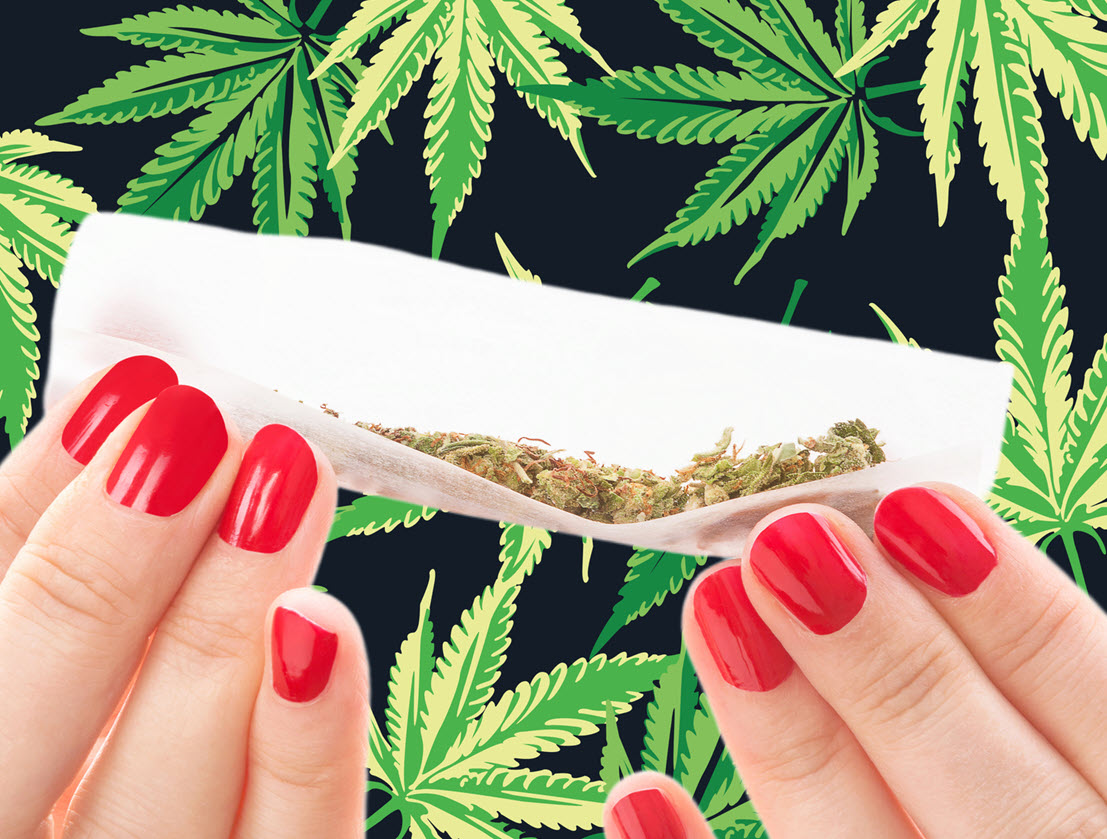
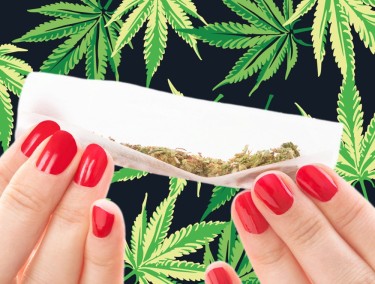
Imagine this: you’ve been introduced to the world of cannabis by a close friend in Sacramento who knows the ins and outs of rolling the perfect joint. You’ve enjoyed a few puffs here and there, basking in the friendship and relaxation it brings.
But then, a few days pass, and you find yourself craving that soothing sensation again. You decide to take matters into your own hands and roll a joint. And that’s where the trouble begins.
Rolling a joint seems like a breeze when you watch someone else do it – grind, roll, and puff, right? But when you try it yourself, it’s a whole different story. Don’t sweat it, though. This guide is here to help you go through the rocky road of joint rolling, focusing on what not to do.
Simply put, below, we’ll walk you through the common mistakes so you can enjoy that puff without the hassle.
The Grinder Grind: Avoiding the Powder Pitfall
Getting the grind right is key to a great joint. Many beginners either turn their cannabis into a fine powder or barely break it up. Both extremes are no-gos. If your grind is too fine, your joint will burn too quickly and unevenly. On the other hand, if it’s too chunky, air won’t pass through properly, making it hard to draw on the joint.
The goal is to achieve a consistency that’s neither too fine nor too chunky. Aim for small, even pieces to ensure a smooth burn.
To avoid making this mistake, use a quality grinder and turn it until you get perfect consistency. This balance ensures that your joint burns steadily without canoeing or going out. As a beginner, it might require a few trials and errors, but once you understand the right way to grind, rolling a joint will become quite easy.
The Stash Shortfall: Keep An Eye on Your Cannabis Supply
Another common mistake that newbie cannabis enthusiasts make is running low on stash, especially when rolling a joint. Just imagine: you come home tired from work, looking forward to unwinding with each soothing puff. But as you prepare, you find that you’re almost out of your favorite strain. Frustrating, right?
Well, It’s a common slip-up. That’s why it is recommended to keep tabs on how much you have left. Nevertheless, if you do find yourself short, there is no need to panic, as you can order your favorite cannabis products online.
In places like Sacramento, for instance, you can easily get flowers, pre-rolls, or extracts. Just look for Sacramento cannabis delivery– it’s super easy and convenient. You can choose from a wide variety of strains and have your selection delivered right to your doorstep.
This not only saves you a trip to the dispensary but also ensures you’re never stuck without enough cannabis to roll your next joint, enhancing your smoking experience and keeping the good times rolling.
The Loose-End Lament: Rolling Right
Stating the obvious, rolling a joint too loose or tight only results in product wastage. If it’s too loose, your cannabis might fall out, or the joint could burn too quickly because of too much airflow. You might find it hard to draw smoke through if it’s too tight.
So, what should you do? Well, the trick is to find a balance. Start by evenly distributing your ground cannabis along the crease of your rolling paper. Then, use your fingertips to gently shape the weed into a cylinder.
Next up, carefully tuck the unglued side of the paper around the cannabis, then roll it towards the glued edge. You want to moisten the adhesive strip of the rolling paper lightly. Think of it as sealing an envelope- not too wet or dry. Just enough so it sticks without tearing.
A gentle touch is important- roll it snugly but not so tight that you compress the cannabis too much. This technique ensures a smooth draw and an even burn, making your smoking experience much more enjoyable.
Remember, practice is essential. The more you roll, the better you’ll judge the right amount of tightness. Soon, rolling the perfect joint will feel like second nature.
To Sum It All Up
Rolling a joint might look simple, but there are plenty of little mistakes that can throw off the whole experience. That said, we hope this guide helps you sidestep those common pitfalls. Just keep practicing your rolling technique. Like any skill, it gets better the more you do it. Before you know it, you’ll be rolling joints smoothly and enjoying every puff.
ROLLING A SMOOTH JOINT, READ ON…

Mother’s Day weed gift guide 2024

Key Things To Know About Hemp And Marijuana Drinks

Indica, Sativa, Hybrid & More

A Deep Dive into the Benefits of Medical Marijuana for Mental Health

Canada’s medical cannabis exports jump to CA$220 million as domestic sales fall

The Best Simple Tequila Cocktails

Did the Death of the Lazy Stoner Stereotype Push Cannabis Rescheduling Forward?

How Not to Roll a Joint : Common Blunders Beginners Make

Cannabis Makes Gym Workouts More Fun Says New Fitness Study

Marijuana backers eye proposed federal regulatory change as an aid to legalizing pot in more states

Distressed Cannabis Business Takeaways – Canna Law Blog™

United States: Alex Malyshev And Melinda Fellner Discuss The Intersection Of Tax And Cannabis In New Video Series – Part VI: Licensing (Video)

Drug Testing for Marijuana – The Joint Blog

What you Need to Know

Cannabis, alcohol firm SNDL loses CA$372.4 million in 2022

NCIA Write About Their Equity Scholarship Program

City Of Oakland Issues RFP For Employee Training Programs

It has been a wild news week – here’s how CBD and weed can help you relax

A new April 20 cannabis contest includes a $40,000 purse

UArizona launches online cannabis compliance online course
Trending
-

 Cannabis News1 year ago
Cannabis News1 year agoDistressed Cannabis Business Takeaways – Canna Law Blog™
-

 One-Hit Wonders1 year ago
One-Hit Wonders1 year agoUnited States: Alex Malyshev And Melinda Fellner Discuss The Intersection Of Tax And Cannabis In New Video Series – Part VI: Licensing (Video)
-

 drug testing5 months ago
drug testing5 months agoDrug Testing for Marijuana – The Joint Blog
-

 Cannabis 1011 year ago
Cannabis 1011 year agoWhat you Need to Know
-

 Marijuana Business Daily1 year ago
Marijuana Business Daily1 year agoCannabis, alcohol firm SNDL loses CA$372.4 million in 2022
-

 Education1 year ago
Education1 year agoNCIA Write About Their Equity Scholarship Program
-

 Education1 year ago
Education1 year agoCity Of Oakland Issues RFP For Employee Training Programs
-

 Cannabis1 year ago
Cannabis1 year agoIt has been a wild news week – here’s how CBD and weed can help you relax





